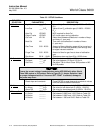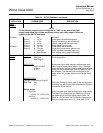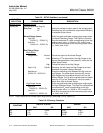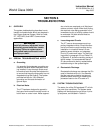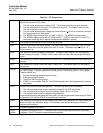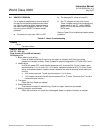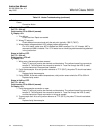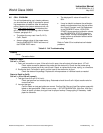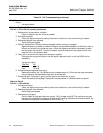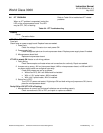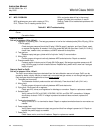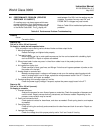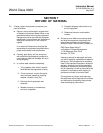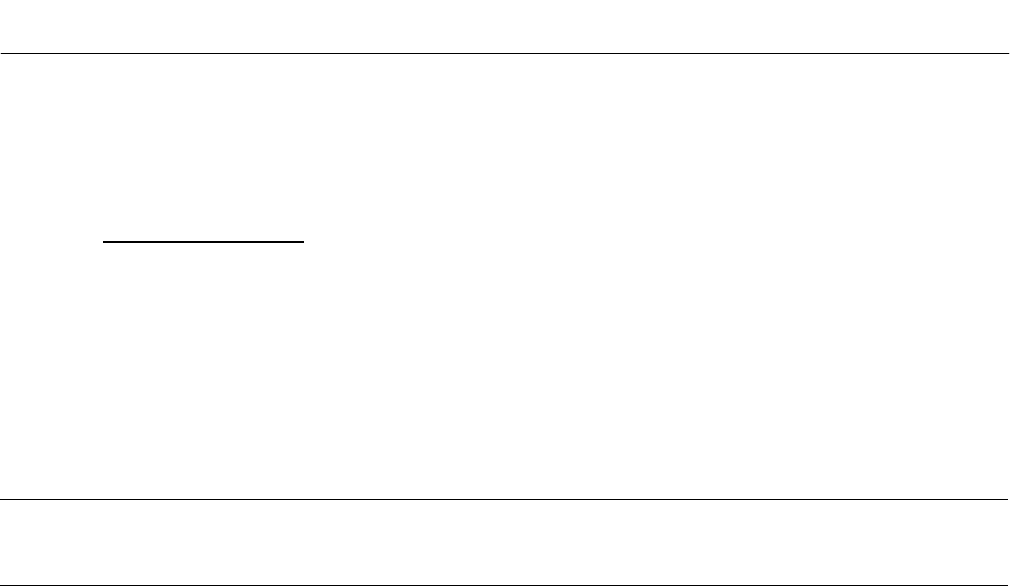
Instruction Manual
IB-106-300NH Rev. 4.3
May 2005
Rosemount Analytical Inc. A Division of Emerson Process Management Troubleshooting 6-5
World Class 3000
6-5 CELL PROBLEM
For cell troubleshooting, as in heater problems,
you should allow at least 30 minutes for operat-
ing temperature to stabilize. After this warmup
period, observe the system status and cell volt-
age. If the heater is working, troubleshoot the
cell. If the heater is not working, refer to Heater
Problem, paragraph 6-4.
• The status line may read: Low O
2
, Hi O
2
,
CalEr, ResHi.
• Access voltage values in the proper menu.
Use the DIAGNOSTIC DATA sub-menu of
the PROBE DATA menu.
• The displayed O
2
value will read 0% to
99%.
• It may be helpful to observe the calibration
status and parameters from the last calibra-
tion: Slope, Constant, and Cell Resistance.
In the CALIBRATE menu, VIEW CON-
STANTS shows previous calibration values,
and CALIBRATION STATUS shows the
latest values. If these values appear out of
range, perform a calibration before trouble-
shooting the cell.
Refer to Table 6-3 to troubleshoot cell related
problems.
Table 6-3. Cell Troubleshooting
Problem
Cause
Corrective Action
Status is LowO
2
.
Cell mV = -127 mV.
1. Faulty cell connection or open. If the cell circuit is open, the cell output will show about -127 mV.
Check cable connection between the probe and the electronics. Check that the probe spring
presses the contact pad firmly onto the cell. Repair or replace faulty wires, spring, or connectors.
2. Electronics fault. Cell output is good, and the input to the electronics is good.
Check the electronics package. Replace the microprocessor or interface board as needed.
Status is ResHi or CalEr.
Cell mV = -20 to 120 mV (normal).
1. Test gas flow not 5 scfh (2.4 L/min).
Check test gas flow and related piping. Rotameter should show 5 scfh. Adjust needle valve for
correct flow rate.
2. Incorrect test gas.
Confirm labels on test gas bottles are correct. Confirm High Gas and Low Gas values agree with
labels on test gas bottles. (Refer to menu map — SETUP-CALIBRATION, High Gas, Low Gas.)
Check all ports, cylinders, and gas lines for proper hookup. Change piping if necessary. Label
pipes for reference.




